
March 2024
volume XXXI number 1

ON THE COVER
Our cover photo this month once again comes to us via our Fishy Friends Facebook Page. These look to me like really RED cherry shrimp! Thanks, Albert!



March 2024
volume XXXI number 1

Our cover photo this month once again comes to us via our Fishy Friends Facebook Page. These look to me like really RED cherry shrimp! Thanks, Albert!

Welcome back to another year with The Greater City Aquarium Society and Modern Aquarium! This first issue of the year is of course in large part a review of what we did in the previous year. What did we accomplish? Well, quite a bit! In this issue you’ll see photos from our Awards Banquet. Everyone seemed to be having a good time, in addition to eating a good meal and hanging out with fishloving friends.
Our March issue is always in part a celebration of what our members accomplished during the past year, both individually and as a club, and as I think you’ll gather from the photos, we had a pretty good time! One of the things you’ll notice in our various accomplishments last year (every year, really) is that a lot of us are involved! It isn’t just two or three people! Compared with the Pandemic years we’ve already made great strides in attendance, and I expect that trend to continue. It’s really just up to us!


Besides the wonderful accomplishments of yesteryear, I think we have some pretty good articles in this current issue as well. Jason Gold continues his saga of “A Life With Fish,” this chapter telling (and showing) us about his trip to Raja Empat. A very interesting read!
Another familiar name shows up as well, as Dan McKercher tells us about his experiences with the Seachem Tidal 110 HOB filter. Meanwhile, our Exchange article this month tells us about “Two New Species of Freshwater Goby.”
This installment of The Undergravel Reporter tells us about a female stingray in North Carolina making news by becoming pregnant, despite having no contact with a male stingray for over eight years! The issue closes with the sad news of the passing of Sal Silvestri, a true stalwart of our hobby. So long, Sal! You’ll be missed!
Remember, as always, we need articles! Modern Aquarium is produced by and for the members of Greater City Aquarium Society. Our members are our authors, and with ten issues per year we always, always need more articles. I know several of you are keeping and/or breeding fish that I would like to know more about, and I’m certain that other members would be interested as well. Share your experience with us. Write about it! If you’re a little unsure about the state of your writing technique, don’t worry – that’s why editors were invented.
If you have an article, photo, or drawing that you’d like to submit for inclusion in Modern Aquarium, it’s easy to do! You may fax it to me at (877) 299-0522, email it to gcas@earthlink. net, or just hand it to me at a meeting. However you get it to me, I’ll be delighted to receive it!

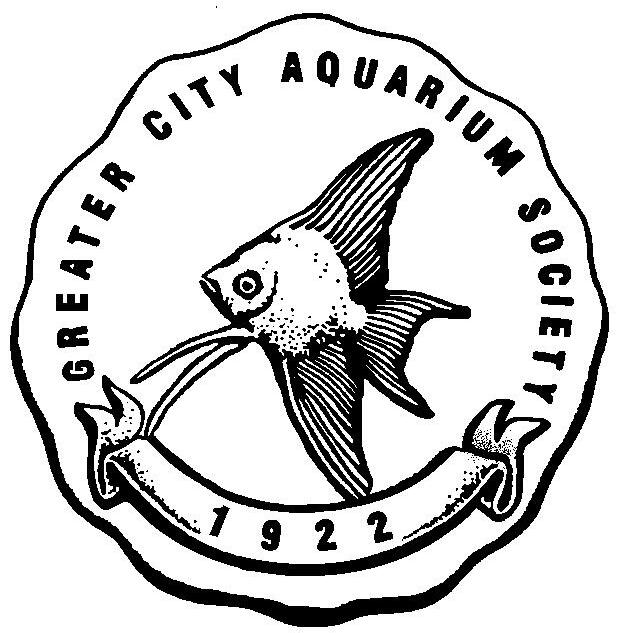
Articles submitted for consideration in Modern Aquarium (ISSN 2150-0940) must be received no later than the 10th day of the month prior to the month of publication. Please email submissions to gcas@earthlink.net, or fax to (347) 379-4984. Copyright 2024 by the Greater City Aquarium Society Inc., a not-for-profit New York State corporation. All rights reserved. Not-for-profit aquarium societies are hereby granted permission to reproduce articles and illustrations from this publication, unless the article indicates that the copyrights have been retained by the author, and provided reprints indicate source, and a copy of the publication is sent to the Exchange Editor of this magazine (gcas@earthlink.net). Any other reproduction or commercial use of the material in this publication is prohibited without express written prior permission.
The Greater City Aquarium Society meets every month, except January and February. Members receive notice of meetings by email snf Facebook. For more information, contact: Dan Radebaugh (718) 458-8437. Find out more, send us a message at gcas@earthlink.net, or visit our home page at www.GreaterCity.net.
It’s going to be another exciting year at Greater City Aquarium Society and Modern Aquarium, and we want to thank you all for being with us throughout this journey. We were very pleased to note that toward the end of last year our meetings were nearly at pre-pandemic attendance levels, and we even welcomed some new members! I would also like to praise our dedicated Board Members, who made sure that we took care of the needs of our members throughout the trying times of the past three years. Best wishes to all of you, and thank each and every one of you for the parts you played in keeping our club vital and active!
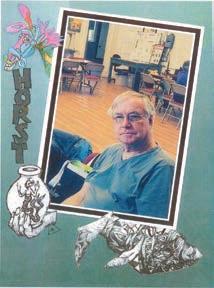
I found it especially heartening that we are once again welcoming younger members to our club, who are bringing a more optimistic feel to our gatherings. I can hardly wait for the new season to begin!
So bring your fish and bring your plants, and bring your curiosity. It’ll be great seeing you all again!
Horst
https://moaph.org/

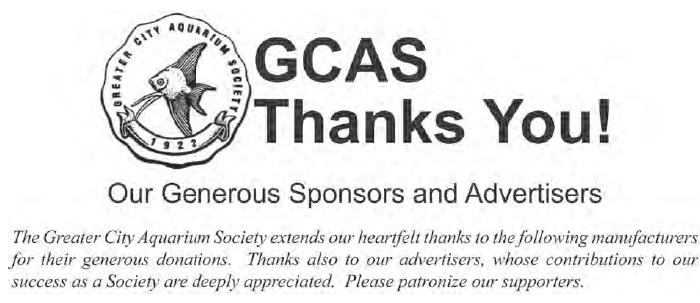
Advanced Marine Aquatics
Al’s Aquatic Services, Inc.
Amazonas Magazine
Aquarium Pharmaceuticals
Aquarium Technology Inc.
Aqueon
Brine Shrimp Direct
Carib Sea
Cobalt Aquatics
Coralife
Ecological Laboratories
Fishworld
Florida Aquatic Nurseries
Fritz Aquatics
HBH Pet Products
High Quality Exotic Goldfish
Hydor USA
Jehmco
Jungle Bob Enterprises
Jungle Labs
Kent Marine
KHC Aquarium
Kissena Aquarium
Marineland
Microbe Lift
Monster Aquarium, Inc.
Nature’s Reef & Reptile
NorthFin Premium Fish Food
Ocean Nutrition America
Oceanic
Omega Sea
Pacific Aquarium, Inc.
Penn Plax
Pets Warehouse
Pet Resources Pisces Pro
Red Sea
Rena
Rolf C. Hagen
San Francisco Bay Brand
Seachem
Sera
Spectrum Brands
Your Fish Stuff.com
Zilla
Zoo Med Laboratories Inc.
Below are photo submissions to our “Fishy Friends” Facebook group. I’ve left the subjects unnamed, but not the photographers. If you see a photo you like, ask the photographer about it! I’m sure that he or she would be delighted to tell you more!

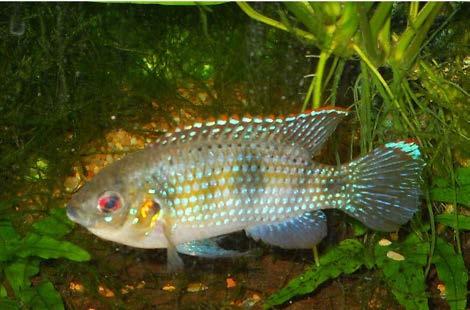

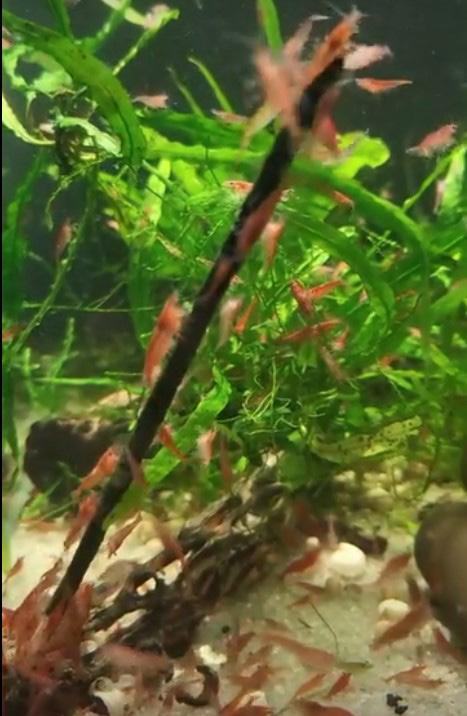
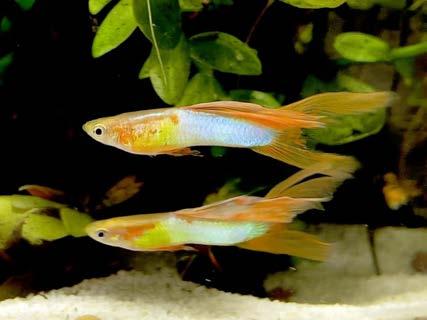
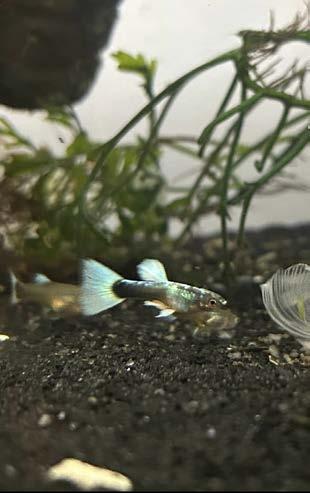



Let’s take a roadtrip to the GCAS March 2024 meeting!
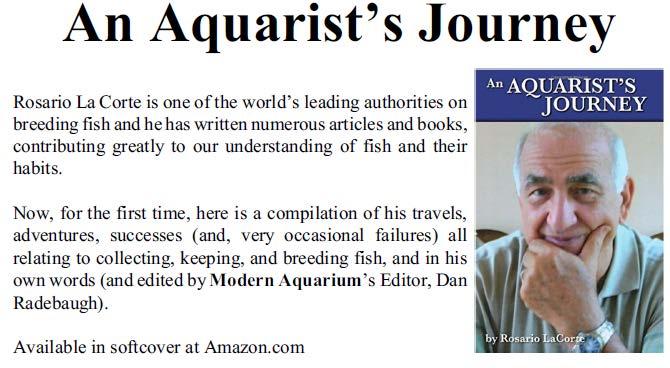
In this contest, you, the members of Greater City, get to choose the caption! Just think of a good caption, then mail, email or phone the Editor with your caption. (phone:347-866-1107, fax: 877-299-0522, email: gcas@earthlink.net.) Your caption needs to reach the Editor by the third Wednesday of this month. We’ll also hand out copies of this page at the meeting, which you may turn in to Marsha or Dan before leaving. Winning captions will earn ten points in our Author Awards program, qualifying you for participation in our special “Authors Only” raffle at our Holiday Party and Banquet. Put on your thinking caps!

Your Caption:
Your Name:

 Photos by Leonard Ramroop
Photos by Leonard Ramroop




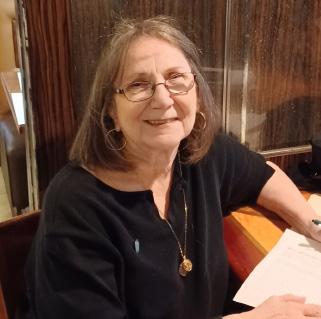
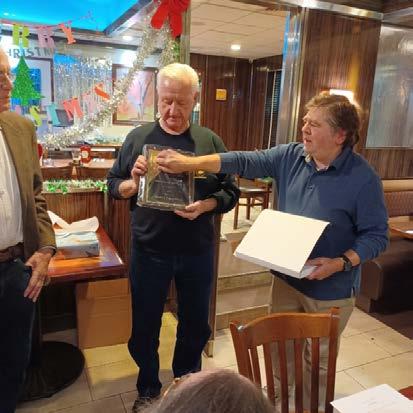

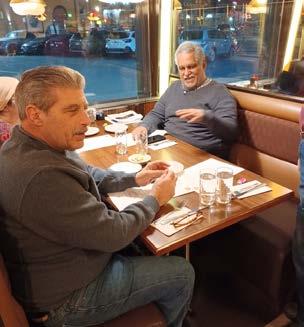
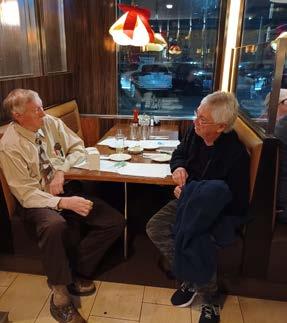
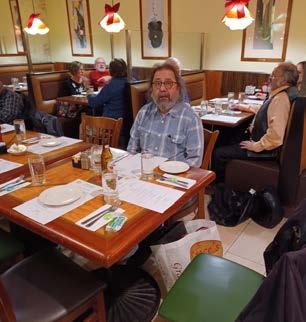
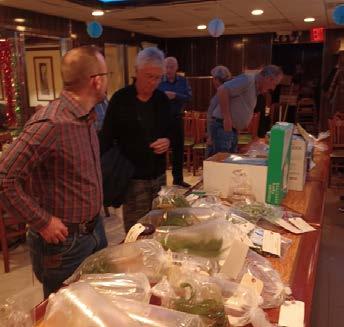

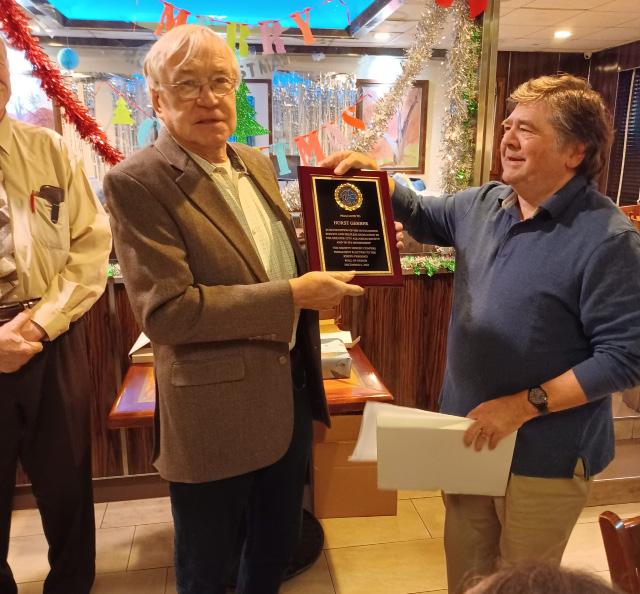

We are always very pleased to welcome new names to our member/author list, and you will see a few new names once again this year! Modern Aquarium is primarily the product of our members. We are grateful for every article and photo from every member, and we hope to hear more from each of you in 2023! Hopefully we’ll also get to see more of one another as we move through next year, also hopefully free of pandemics!
The GCAS AAP awards points for contributions to Modern Aquarium.Each person making a qualifyingcontribution to Modern Aquarium receives points, as well as chances for a Prize Drawing at the Annual Holiday Party.
Eligibility
Any member of Greater City who makes a contribution to Modern Aquarium is automatically a participant.
Points
Five points will be awarded for an original article of 500 words or less.
Ten points will be awarded for an original article of 501 words and over.
Five points will be awarded for an original photograph, drawing, or illustration submitted with, and as part of, an original article. If more than two photographs, drawings, or illustrations are submitted with a related article, only two will be given points (this is in addition to the points awarded the article, based on its size).
Ten points will be awarded for an original color photograph that is used on the front cover. Photographs must be the work of the member submitting them, and must not have been previously published, or submitted for publication, in any commercial or amateur publication.
Two or more related photographs or illustrations submitted with captions, and occupying one or more pages, will be counted as two photos (10 points) and as an article over 500 words (10 points), for a total of 20 points. An example would be a photo spread with captions.
C.A.R.E.S. Preservation Program will receive doublepoints (i.e., 10 points for an article of 500 words or less, and 20 points for an article of 501 words or more). Photos and drawings of a C.A.R.E.S. eligible species will also receive double points.
Five points will be awarded for an original puzzle which is used on the “Fin Fun” page of Modern Aquarium
Points are awarded only once for an article, drawing, puzzle, or photograph. No points are awarded for subsequent reprints, regardless of whether the original article was awarded points previously in the AAP. To be eligible for AAP points, a contribution Modern Aquarium. However, if an article previously published in Modern Aquarium (as a result of new information or developments), Modern Aquarium, it will be treated as a new article. Points are awarded in the year the article is printed. Editorials and President’s Messages are excluded.
An article deemed unacceptable by the Modern Aquarium for reasons of appropriateness of topic, suitability, or possible violations of copyright or libel laws, will be ineligible for participation in the GCAS AAP. Decisions of the
Pointscredited to an author may not be carried over or credited to subsequent calendar years for the Year” designation.
If, in the year following its publication in Modern Aquarium, an article is given a 1st, 2nd or 3rd place award by the North East Council of Aquarium Societies (“NEC”) or by the Federation of American Aquarium Societies (“FAAS”), an additional 10 points will be awarded if the author is a GCAS member in the year the NEC or FAAS award is announced. This applies only to articles (not to drawings, columns, cartoons or photos). These bonus points are credited in the year that the award is announced, not the year for which it is awarded.
For every 5 AAP points earned in a calendar year, the recipient is given one chance in our “Authors/
Theperson with the most points in a calendar year
AuthorOfTheYear” for that year. This is our most prestigious award, and the place on the contribution of experience and knowledge to the aquarium hobby at large.


Ron Webb receives an ADVANCED BREEDER AWARD for an all time total of 115 points!
Corydoras aeneus Albino 10 points Catfish
Corydoras aeneus Green 10 points Catfish
Poecilia sphenops 5 points Livebearer
Tanicathys albonubes 5 points Egg layer
Neocardina davidi Blue Dream Shrimp 15 points Shrimp
Neocardina davidi Green Shrimp 15 points Shrimp
Ancistrus cirrhosus 15 points Catfish
Total 75 points
Dan Radebaugh receives a BREEDER AWARD for an all time total of 65 Points.
Heros liberifer 10 points Cichlid with articles and photos 20 points Total 30 points
Harry W. Faustmann receives an ADVANCED BREEDER AWARD for an all time total of 235 points.
Nothobranchius fuscotaenatus 20 points Killifish
Corydoras sterbai 10 points Catfish
Simpsonichthys constanciae 20 points Killifish
Nothobranchius rachovii Beira 98 20 points Killifish
Nothobranchius korthausae Red 20 points Killifish
Nothobranchius species South Kenya 20 points Killifish
Corydoras schultzi 10 points Catfish
Macropodus opercularis Red 5 points Gourami
Pseudomoguil luminatus 10 points Rainbow Cichlid
Total 135 points
Joseph Ferdenzi
Julidochromis ornatus 10 points Cichlid
Neolamprologus brichardi 10 points Cichlid
Xiphophorus montezumae 5 points Livebearer
Total 25 points

Gene Baiocco
Jules Birnbaum
Joe Bugeia
Mary Ann Bugeia
Dan Carson
Claudia Dickinson
Pete D'Orio
Charles Elzer
Joe Ferdenzi
Warren Feuer
Herb Fogal
Al Grusell
Paul Hahnel
Ben Haus
Emma Haus
Jason Kerner
Jack Oliva
Al Priest
1981-83 Ginny & Charlie Eckstein
1983-85 Rich Sorensen
1985-86 Yezid Guttierez
1986-87 Joe Ferdenzi
1987-88
Patricia Piccione
1988-89 Joe Ferdenzi
1989-90 Francis Lee
1990-91 Eddie Szablewicz
1991-92 Dominic Isla
1993-94 Joe Ferdenzi
Susan Priest
Herman Rabenau
Dan Radebaugh
Marsha Radebaugh
Marcia Repanes
Nick Repanes
1994-95 Steve Sagona
1995-96
Tom Miglio
1996-97 Mark Soberman
1997-98
1998-'00
Jeff George
Tom Miglio
2000-01 Mark Soberman
2001-02 Alexander Priest
2002-05
Anton Vukich
2006, 2018 Warren Feuer
2007-10 Jeffrey Bollbach
1990-91
1991-92
1992-93
1993-94
1994-95
1995-96
1996-97
1997-98
1998-99
1999-00
2000-01
2001-02
2001-02
2002-03
2003-04
2004-05
Diane & Harold Gottlieb
Doug Curtin & Don Curtin
Mark Soberman
Warren Feuer
Steve Sagona
Alexander & Susan Priest
Joe Ferdenzi
Claudia Dickinson
Vincent & Rosie Sileo
Pete DʼOrio
Bernard Harrigan
Joe Ferdenzi
Jason Kerner
Carlotti De Jager
Jack Traub
Claudia Dickinson
2006
2007
2008
2009
2010
2011
2012
2013
2014
2015
2016
2017
2018
2019
2020
2022
1983-84, 84-85
Tom Lawless
1985-86, 86-87 Joe Ferdenzi
1987-88 (tie) Mark Soberman and Mary Ann & Joe Bugeia
1988-89 Jason Ryan
1989-90 Eddie Szablewicz
1991-92 thru 93-94 Steve Sagona
1994-95
1995-96
1996-97, 97-98 Steve Sagona
1998-99, 99-2000 Tom Miglio
2000-01 Pat Coushaine
2001-02
2002-03
Carlotti De Jager
Mary Eve Brill
Don Sanford
Mark Soberman
2011-12, '16, '19-21 Joseph Graffagnino
2013
2014
2015
2017
2018
Leslie Dick
Mark Soberman
Artie Platt
Joe Ferdenzi
Warren Feuer
2022 Jules Birnbaum
Anton Vukich
Ed Vukich
Al Grusell
Dan Radebaugh
Pete DʼOrio
Jeffrey Bollbach
Jules Birnbaum
Dan Puleo
Leonard Ramroop
Alexander & Susan Priest
Elliot Oshins
Joseph Gurrado
Dan Radebaugh
Marsha Radebaugh
Jules Birnbaum
Jason Kerner
William Amely
Evelyn Eagan
2003-04 William Amely
2004-05 Evelyn Eagan
2006, 2007 Ed Vukich
2008
William Amely
2009
Mario Bengcion
2010 Alexander A. Priest
2011, 2012 Richard Waizman
2013
Jerry O’Farrell
2014 Ruben Lugo
2015, '16, '19 Richard Waizman
2017, 2018
2020
William Amely
Harry Faustmann
2022..............John "Buzz" Buzzetti
GCAS PRESIDENTS (Post 1945 — number in parenthesis = consecutive terms)
1946-49 Elliott Whiteway (4)
1950-51 Robert Greene (2)
1952-53 Robert Maybeck (2)
1954-55 Leonard Meyer (2)
1956-57 Sam Estro (2)
1958 Leonard Meyer (2+1)
1959-64 Gene Baiocco (6)
1965 Andrew Fazio (1)
1966-68
Charles Elzer (2)
1968-70 Walter Hubel (2)
1970-72 Dave Williams (2)
1972-73 Dan Carson (1)
1973-75 Herb Fogal (2)
1975-76 Richard Hoey (1)
1976-77 Ted Tura (1)
1977-78 Gene Baiocco (6+1)
1978-79 Louis Kromm (1)
1979-81 Don Sanford (2)
1981-84 Brian Kelly (3)
1984-86 Jack Oliva (2)
1986-97 Joe Ferdenzi (11)
1997-99 Vincent Sileo (2)
1999-00 Jeff George (1)
2000-08 Joe Ferdenzi (11+8)
2009-16 Dan Radebaugh (8)
2017-23 Horst Gerber (7)
To be awarded March 6, 2024
Harry W. Faustmann
Harry W. Faustmann
Ritchie Waizman
Horst Gerber
Greater City Authors who made contributions printed during 2023, and who received AAP points as a result of NEC publication awards announced in 2023 are:
My Life With Fish - Science Projects -- Jason Gold
Dehumidifier Or Air Exchanger? Dan McKercher
Some Tricks From My Fishroom -- Jules Birnbaum
Breeding Nothobranchius guentheri -- Joseph Ferdenzi
Breeding Girardinnus metallicus -- Dan Radebaugh
Cartoon Caption Contest -- Denver Lettman
The Undergravel Reporter -- The Undergravel Reporter

“Betta rubra” by Gary Lange..................................................................................03/12
“Name That Fish Right, Boy!” by Dan McKercher................................................03/15
“Native Wood for the Home Aquarium” by Joseph Ferdenzi.................................04/13
“Potassium Permanganate ‘PP’ ” by Dan McKercher.............................................04/19
“Tales from the Tank” by Dan McKercher..............................................................05/26
“Downsized!” by Stephen Sica...............................................................................06/11
“Inbreeding and Line Breeding” by Dan McKercher..............................................06/13
“A Little Bit Of Upsizing” by Stephen Sica...........................................................07/15
“Breeding the Gold/Orange Laser Cory” by Dan McKercher................................07/26
“My Balanced Aquarium Experiment” by Joseph Ferdenzi....................................08/11
“A Rare Relic From the First Golden Age of the American Aquarium Hobby.” by Joseph Ferdenzi..................................................................................................03/09
“When Was The First Aquarium Created? ”by Thomas Warns..............................05/09
“New York’s First Aquarium Mega Store (Maybe)” by Joseph Ferdenzi...............05/13
“The
CATFISH
“Walking...(Clarius Gatrachus)” by Derek P.S. Tustin...........................................05/23
“The Ancistrus Effect” by Joseph Ferdenzi.............................................................11/11
CICHLIDS
“Heros liberifer” by Dan Radebaugh......................................................................04/11
“Observations on Julidochromis ornatus” by Joseph Ferdenzi..............................09/13
COVER PHOTOGRAPHS
“Betta rubra” Photo by Gary Lange......................................................................03/C1
“Willow Leaf” Photo by Joseph Ferdenzi..............................................................04/C1
“Ancistrus SP. (Green Dragon Bristlenose Catfish” Photo by Jan Sereni..............05/C1
“Apistogramma cacatuoides” Photo by Jules Birnbaum.......................................06/C1
“Classical Aquarium” Photo by Lonnie Goldman.................................................07/C1
“Cichlids” Photo by Prast Pasp..............................................................................08/C1
“Planted Aquarium” Photo by Victor Huang.........................................................09/C1
“Planted Aquarium” Photo by Lonnie Goldman....................................................10/C1
“Maratecoara lacortei” Rosario LaCorte..............................................................11/C1
“Saltwater Tank” by Lonnie Goldman...................................................................12/C1
COVER PHOTOGRAPHS from Modern Aquarium Series III
ECOLOGY
“New York Harbor s ̕Marine
“What
“How
“
“Myths:
“Accord
“
“
“1916 U-Boat Delivered Tropical Fish for St. Louis” by Thomas M. Keevin & Chuck Bremer.......................................................................................................07/17
“The Blackout Look” by Mo Devlin.......................................................................08/13
“Rabbit Snails” by Dr. Glen Roberts.......................................................................08/23
“Aliens Among Us” by John Todaro......................................................................10/17
“The Alligator Gar and Lock & Dam 26. Alton, IL” by Thomas M. Keevin.........10/27
“Fish Can Recognize Themselves In Photos!” by Betty Mason.............................11/18
“What Goldfish Driving Cars Tells Us About Navigation” by Maria Temming....12/13
“RIP, Dear Elliot!” by Artie Friedman.....................................................................03/14
“Ray ‘̔Kingfish Lucas” by Joseph Ferdenzi............................................................04/10
“In Memoriam: Ginny Eckstein 1946-2023” by Joseph Ferdenzi.........................09/09
“Ken Lazara: A Personal Remembrance” by Joseph Ferdenzi...............................10/11
“The Origin of Modern Aquarium” by Joseph Feredenzi....................................05/19
“From The Editor’s Desk” by Warren Feuer...........................................................05/20
“Sense Of Smell In Fishes” by Alex Bartach..........................................................07/21
“The Case of the Hanging Cichlids” by Frank Fallon.............................................08/21
“Coming Home A Winner” by Elliot Oshins...........................................................09/26
“Pink Panther Grouper” by Bernard Harrigan........................................................09/27
“Blame It On Wanda!” by Warren Feuer.................................................................10/12
“My Microworm Recipe” by Alexander Priest.......................................................11/21
“Why Hobbyists Should Write for their Club Journal” by Wayne S. Leibel .........12/15
“The Secret of the ‘Underwater Mystery Clock” by Joseph Ferdenzi...................12/19
“The Chocolate Cichlid” by Dan Radebaugh..........................................................12/21
“Fun Fish” by Berrnard Harrigan” by Bernard Harrigan........................................12/28
SPEAKER
Tonight
Tonight s Speaker: David Banks, on Lake Tanganyika Cichlids.....................04/07
Tonight s Speaker: Emiliano Spada, on Pre-electric Aquarium Paaphenalia 05/05
Tonight s Speaker: Karen Randall, on Sunken Gardens .................................06/12
Tonight s Speaker: Dr. Paul Loiselle, on The Hemichromines .........................07/07
Tonight s Speaker: Sebastian Alvarado, on Color Changes in Fish ................09/13
Tonight s Speaker: William Guo, on Freshwater Shrimp.................................10/07
Tonight s Speaker: Tom Keegan, on Fish Biology 101, Part II ........................11/07
“A Fish Only A Mother Can Love”........................................................................03/37
“(Japanese for ‘Mermaid’)”....................................................................................04/25
“How
“An
“Open
“Robotic
“Vertebrates
“Remarkable


About six years back I purchased a Seachem tidal 110 filter for a 45 gallon cichlid tank. I had store credit, so why not? Gotta say that this filter carries a price tag higher than most. If I hadn’t had store credit I don’t think I would have acquired it.
This filter simply doesn’t fail! If the power goes out it starts up where it left off when the power comes back on. Other HOB filters require water in the basket for them to start. This one starts even if the basket is dry, because the pump is located in the tank. There are a few HOB filters that are playing catchup with the pump in the tank.

Unlike most other HOB filters, the basket allows for your choice of filter media. It comes with a sponge in the bottom and a sack of some type of stone. This a great savings because there are no cartridges to purchase. See https://www.seachem.com/tidal-filters.php for the specs.
I ran this filter in that cichlid tank for over five years with no issue AT ALL. I simply rinsed out the sack of stone and the sponge every month or so. It really is durable! The impeller never hung in the least. The pump would let you know if the tank is low on water, as it will sound like a cement mixer. Simply add water to the tank and it quiets right down.

In the five years I never saw fry in this tank. Didn’t give it a thought until I re-purposed the filter. I put it in a tank of bushynose plecos. I started to notice plecos in the basket. I put a pre-filter on the intake, but still had fish in the basket. Inspecting the filter further, DUH! This filter has a skimmer in it! While this is a problem for small fry, shrimps and other small fishes, I quickly found out that my problem was that the plecos love swimming upstream! I discovered some plecos in the basket no matter what I did. I finally decided to move any plecos back to the tank as part of my filter cleaning routine. Still, any newly free-swimming fry could get sucked up in the skimmer. The impeller would surely make short work of those little fellas as the impeller has something called self-cleaning impellers. In short, the impeller rides close to four stationary plastic blades, which allows most small things to get shredded up in an effort to keep itself clean.
So off to Google I went. After all, other folks must have run into this issue. I found that some of those other folks would stuff sponge into the lower area inside the skimmer part of filter. I pulled off the lower part of the filter to see where those folks would stuff sponge, and I found that the lift tube is darn close to useless on this pump as most of the water that is being taken in is in the skimmer area.
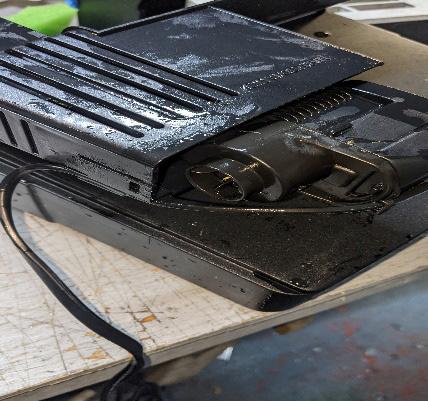


I noticed that the pump intake goes off to one side with enough space on the intake to put a tube there and use an elbow to send it lower into the tank. This modification made it so the new intake was the only place from which the pump would draw water out of the tank. With the addition of a pre-filter this pump can no longer suck up fry.
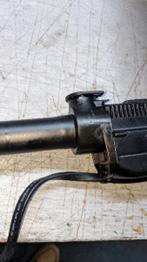
The pump slides out of the upper housing for cleaning and such. It also makes it easier to add the new intake to the pump.


For Version 1.0 I used a stainless steel hose clamp to keep it in place. The clamp failed miserably. When I would tighten it up the IPEX tubing would pop off. So for Version 2.0 I implemented a union and rubber bands to keep the tube attached. The union has what look like handles on them, so you can pull them out of the IPEX tube if needed. This worked very well to hold the rubber bands in place. The back side of the pump has a nipple that is perfect to hook rubber bands to. With this MOD I quickly found that I could locate the uplift to the opposite side of tank from the filter. This let the filter act more like a canister filter than an HOB without the need to deal with a canister. The original uplift tube fits right over the ¾"IPEX tube.
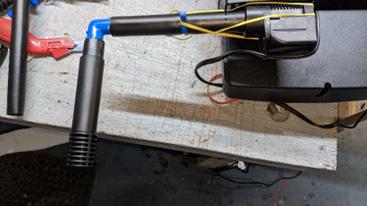

The end result is that I have a great HOB filter that I have full control of where it will take in water from anywhere in the tank! Thanks for reading. And remember, if it holds water put a fish in it!


I’m not a religious sort. Yes, I was raised within a religious tradition—I’m Jewish—and yes, I feel a strong affinity and attachment to that tradition as a cultural inheritance and ethical touchstone. But I’m a naturalist, a realist, an analyst. I don’t believe in any of the supernatural stuff. Nor do I look for natural or historical explanations of the miraculous events related in religious scripture and literature. I believe that those writings are frameworks that powerfully convey moral and ethical lessons whether or not the events they describe ever actually happened. Growing up Jewish in Georgia in the 1960’s and 70’s, I had experienced a lot of anti-Semitism which was the nasty underside of all the good that religion can and does bring to humanity. It kind of soured me on the whole religion thing. I value my own cultural heritage, and all others’ as well, but I don’t take the narratives literally. And yet, I could see open-eyed how the wonders of nature could very naturally lead to some of those essential religious questions like “How did this all get here?” and “What does it all mean?” In a lot of ways, my hobbies have been a way of answering those very questions for myself. They’re not just passing interests, but intense engagements with what some might call Creation but I call The Universe.

It had been two years since the compound thrill of my month-long odyssey to Borneo and Sulawesi, including a week spent diving in the remote Togean Islands. I had saved up and was ready to go diving again, to see more fish and more of The Universe. But this time I figured I’d stick closer to home, maybe find some great spot in the Keys or the Caribbean. There’s a bunch of well-known diving destinations in the region—the Cayman Islands, the Turks and Caicos, Roatan, Bonaire, Cozumel, and lots more. My plan was to go over Labor Day, and this time I wanted to try a liveaboard. I went on the PADI website to see what I could find. But I guess I’d been spoiled by the superlow prices on my Togean adventure, and I suffered serious sticker shock looking at the Caribbean options. The airfares over the holiday weekend were even worse. What’s a fish person to do?
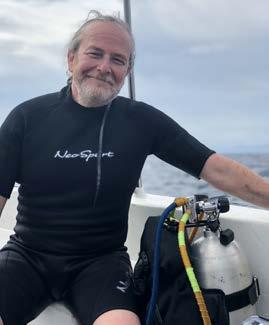
I remembered that after almost every dive in the Togeans, I’d emerge from the water totally thrilled by what I’d seen. But I was actually the least experienced diver in the group, having previously done only resort dives in Barbados, my scuba certification course at Asphalt Green, and open water dives in the Gulf of Mexico, off the Florida panhandle, a beautiful stretch of cornstarch sand locally called the Redneck Riviera. I had only snorkeled, never dived, on a natural
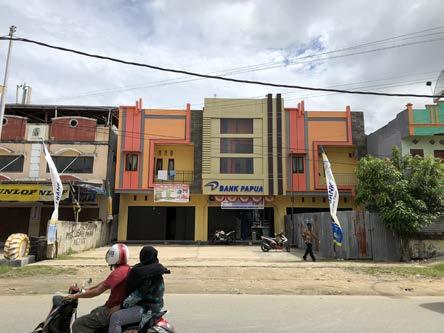

reef before I bounded over all the closer-to-home possibilities and found myself in the Togeans. The other divers I met there, a very international group that had dived all over the world, would often respond to my enthusiasm with, “Yeah, that was great, but it’s not Raja Ampat.” And even I, despite my inexperience, could see that many of the Togean reefs were not pristine. On several dives, the coral near the surface was damaged or dead. Although under government protection, there continued to be poachers who fished with explosives and tranquilizers to stun large fish to eat and smaller fish to ship out to the salt-water aquarium hobby. There were also stretches of coral that had bleached in the warming waters of the Gulf of Tomini in which these islands were set, embraced between the north and central peninsulas of Sulawesi and cut off from the cooling currents of more open waters. Deeper waters and areas that the local poachers considered off-limits still teemed with magnificent life. There was a scuttled WWII fighter plane a little too close to the mangroves, purposely sunk to avoid having it fall into enemy hands and therefore perfectly intact. And there were the reefs ringing the sacred active volcano Una Una, untouched and magnificent.

I decided to look into Raja Ampat and other dive spots they had mentioned, just to see if there were any surprise possibilities. Besides, one thing I’d definitely learned from my prior trip to Malaysia and Indonesia was that there were bargains to be had. I looked at the Red Sea, but diving from Egypt or Israel was no bargain, and it seemed that the best diving was from the Sudan, unfortunately not a safe place to travel then or now. And I looked at Sipidan, the Malaysian island off the tip of Borneo that many dive resources proclaim the best dive site on the planet. But that was very expensive too and highly restricted, with only a very few daily permits issued to dive Sipidan itself. Going for a whole week, I might get only two dives at the best sites. Not worth it. I looked at Pulau and other remote Pacific island nations, and the diving was often surprisingly affordable, but the airfares were through the roof. I looked at Komodo, in Indonesia, but the strong currents made it an iffy proposition for someone like me with fewer than 100 logged dives. Then I finally checked out Raja Ampat. The photos were otherworldly both above and below the water, there were lots of affordable liveaboards, and the airfares were actually less than those to the Caribbean over Labor Day. And besides, although the divers I met in the Togeans all compared notes about diving in all those other places, the spot they most revered was Raja Ampat.
Raja Ampat is a group of islands off the Bird’s Head Peninsula, the western tip of New Guinea. The western half of New Guinea is the Indonesian province of West Papua, formerly known as Irian Jaya (Realm of the Rainbowfish in my childhood construct of ichthyogeography); the eastern half of the island is the independent nation of Papua New Guinea. The name Raja Ampat translates to “Four Kings” for the four main islands set amid thousands of tiny surrounding islets. Most are uninhabited, which means there are no man-made land impacts such as agriculture, ranching, or logging and their resulting silt and fertilizer run-off that can smother and destroy surrounding reefs. The island group sits in the center of the Coral Triangle and includes some of the most biodiverse underwater
habitats on Earth. 80% of all known coral species are found at Raja Ampat. In fact, because of the ocean currents, many of the inhabitants of the other reef systems throughout the Indo-Pacific start their lives there as larval plankton. Finally, these same currents ensure constant turnover of the surrounding waters, so Raja Ampat has not yet experienced significant episodes of coral bleaching and reef death. The reefs remain pristine.
I couldn’t quite believe it, but it seemed I’d be going to Raja Ampat. After considering all the possibilities, I chose a low-key liveaboard called Ratu Laut, Queen of the Sea. It was modest and straightforward and all about the diving, with no onboard spas or photo studios or other luxuries that not only didn’t interest me, but actually made me feel uncomfortable. I’m just a guy who’s interested in fish — not a visiting lord. And no wi-fi either. Perfect. Plus the boat was run by a non-profit called Barefoot Conservation that was helping villagers on one of the few inhabited minor islands by, among other things, building and staffing a school so that the local kids could get their primary education without having to shuttle daily to one of the larger islands, training adults as dive guides to give them a way of earning a better-than-subsistence living in the tourism industry, and planting mangroves along the shore to protect their reefs from human runoff and their island home from rising sea levels. So I felt that I wasn’t just being a tourist, exploiting the local resources for my own pleasure, but was also helping to protect and restore those same resources.
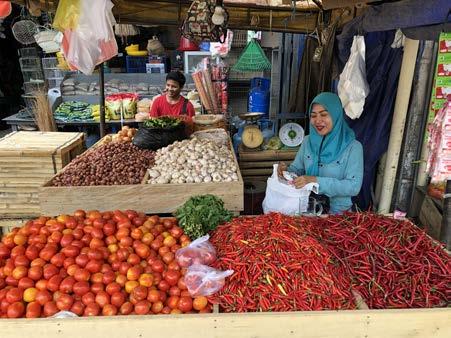
Trips to Raja Ampat start at the oil and timber port of Sorong, on the Bird’s Head Peninsula, about a four-hour flight and two time zones east of Jakarta. Most of the flights leave Jakarta late at night and arrive in Sorong early the next morning, as did mine. On the Garuda plane, I awoke to see the sun rising over the suitably turquoise sea, dotted with the green hummocks of those tiny outer islands surrounded by the pale veils of sand banks and the dark chains of coral reefs. Sorong itself was bombed to smithereens during World War II, first by the

Before each dive we received a briefing from our Aussie divemaster Wendy with the dive plan, including the specifics of the reef and currents and depths as well as the wildlife we'd likely see. I'm "New York," diving this time with Oves. Japanese in their march toward Australia, then by the Allied counteroffensive. There’s almost nothing left that pre-dates the war. What is there was built back after the war, a mad jumble of tropical Modernism in Brutalist cast concrete, all joyously, even hilariously provincial. (I’m an architect by profession.) Although the largest city in the region, and home to over a quarter of a million people, it’s hardly urban. The city, as such, stretches out along the coastal highway, and the urbanism, as such, is one building deep. Behind this jammed, colorful frontier-town facade is jungle, dotted with houses and hotels and clusters of small commercial buildings. I arrived at my hotel at around 7AM, exhausted by all the travel, yes, but way too excited to sleep. I was staying there tonight because that was where my group would be meeting early the next morning to head for Raja Ampat. All the spaces—the lobby, the corridors, my room—were way too big, giving the place a sort of depopulated and haunted, king-alone-in-his-castle feel. Knowing that tourists would be arriving on early flights, breakfast was already laid out in the dining room, and after three days of airplane and airport food preceded by three days of cleaning-out-the-fridge food, I scarfed down a heap of scrambled eggs and beans and rice flecked with crushed dried fish, grilled tomatoes, and a big pile of perfectly ripe fresh fruit—watermelon (with seeds, the way I like it, just as I like my aquarium fish to be in their original forms) and pineapple and mango and my absolute favorite, papaya with a squeeze of lime. I was ready to start exploring.
I went to the front desk to ask how I’d get to the local market, always the first thing I want to see when arriving at a new place, even in the US. The clerk’s English was just OK, and he said, “You want to go to the supermarket?” “No, no, not the supermarket, the market.” He didn’t understand. I pulled out my phone and conjured up an image of the Union Square Greenmarket: “Market.” He lit up, pulled out a map, and directed me basically to cross the coastal road that ran directly in front of the hotel and head into the area of shacks and sheds on the other side, adjacent
to the grounds of the airport. I’d read that there was a fabulous seafood market by the harbor and asked about that as well. He glanced over his shoulder at the clock on the wall. 8am. “No, too late for the fish market. They’re closing now.” So I headed to the highway, which was swarming with motorbikes and panel trucks. There was a traffic light, but that, apparently, was irrelevant. A group of guys leaning on their motorcycle taxis were laughing at me as I waited for a momentary gap in the traffic. “Hello mister, you want a ride to cross the street?” Very funny.
The chicken did get across the road, and as I peered down the narrow, unpaved streets, I could see that hotel clerk had been spot on. A couple of blocks into the maze of small buildings was the unmistakable hubbub of an outdoor market. I dove in. There were gorgeous piles of perfect produce—melons and squashes and bananas and greens and stinky durians and dozens of kinds of peppers. I was immediately an object of curiosity. “Hello mister!” came at me from all directions, and when I answered “Hello!” men and women alike would giggle, amazed, it seemed, that I understood and responded in kind to this locally ubiquitous English phrase. Indonesia is the most populous Muslim nation in the word, and outside of a contemporary mosque at the center of the market, a misplaced Moorish structure with alternating bands of white and beige stone, a young woman approached me, her girlfriend hiding shyly behind her. “Hello, mister. I wonder if I can practice my English with you?” she inquired. “Sure, I’d be happy to.” She proceeded to ask me some very general questions in very precisely articulated English, things like “What is your name?” and “Where do you live?” Each time she asked me a question I asked her the same in return, and as the conversation went on, I was utterly charmed. Then she asked “Where are you staying?” and my New York City urban cynicism kicked in. Why was she asking that, and what question was coming next? I answered, cooly and generically, “At a hotel.” Her eyes opened wide with disbelief. “A hotel! That must be very…luxurious!” and I realized I’d totally misjudged the innocent situation. To her the idea of staying in a hotel was beyond imagining, the pinnacle of pampered luxury, even if to me the emptiness of the actual place I was actually staying reminded me a bit of “The Shining.” I definitely wasn’t in Kansas any more. This one conversation taught me that as much as I was trying to travel low-key, budget-conscious, responsibly and respectfully, avoiding obvious outward displays of privilege, the very fact that I was there at all was an almost outrageous privilege. Here were thousands of people who, I could only assume, were much like my young interlocutor. As I found out, she’d lived her entire life in Sorong, had never been to Raja Ampat, had never been to Jakarta, indeed had never been on an airplane or slept in a hotel room. “So you’ve never stayed in a hotel?” I asked. “Oh, no!” she replied, as though the very notion were just too
absurd to consider. How arrogant of me to think that my aw-shucks approach to travel allowed me to pass for a regular guy in such a place where my clothes, my shoes, my hair, my camera, my watch, my iPhone, the color of my skin, the daypack on my shoulder, the language I spoke, all marked me as something not regular at all. In New York, I’m just a stranger in the crowd. Or am I?
Suitably humbled, I continued to pick my way through streets and alleys, into portions of the market devoted entirely to, say, footwear or lawn furniture or kitchenware and a row of enclosed booths that sold gold and gems. There was even a vendor at the edge of the market that sold finials and minarets to grace the roof of your own private prayer space or musalla Eventually, I found my way back to the main road and returned to my hotel. As fabulous and fascinating as the market was, I didn’t buy much beyond some almond cookies to keep in my daypack. I’d traveled in the tropics before and knew that it was essential to always have three things with me at all times: a bottle of water, a bottle of DEET, and something sweet. Besides, I didn’t want to be schlepping a bunch of handicrafts with me for the next ten days. I knew I’d be back in Sorong for two days after my diving adventure. You can’t get on an airplane for at least 24 hours after diving without risking pressure-shift ear damage. There would be time then to stock up on whatever I wanted to bring home with me.
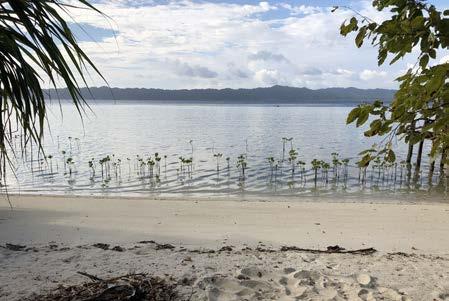
There’s a ton more to tell, even in those first twenty-four hours between landing in Sorong and heading out to the Four Kings. But this is supposed to be about the fish, not an exhaustive travelogue. So I won’t tell you about the American couple I met in my hotel lobby, on their way back from Raja Ampat. Or my baffling foray to, yes, the supermarket to pick up supplies for the boat. Or meeting the American couple that evening for a fabulous seafood feast at a restaurant on the harbor. Or the bus ride back from dinner, which deposited me in the middle of some serious nowhere, only to have the bus driver take pity on his hapless passenger and hail a motorcycle taxi to zip me back to my hotel, hanging on for dear life as we raced along the empty, rain-slicked streets. Nope, none of that. But the adventure, quite clearly, had already begun.
The next morning in the lobby of my hotel, our group gathered to start our journey to Raja Ampat. We met our trip leader and primary diving guide Wendy, an Australian woman who’d grown up on a remote farm before taking to the water, for our initial briefing. She was younger than my own daughter and, in fact, younger than any of the passengers. There were four other divers on the trip with me, a Brazilian woman in her 20’s with a Ph.D. in Economics who worked for the Brazilian government; another Brazilian woman in her 30’s, a corporate headhunter who’d dropped everything after a bad breakup to travel for as long as her money held out (the two Brazilians had met a couple of months earlier while diving in the Gili Islands off Lombok, Bali’s lower-key neighbor, and had decided to reconnect in Raja Ampat); a young marketing exec from Barcelona in his late 20s; and a 30-something Kiwi field biologist, kicking back between long gigs living alone in his tent, counting endangered birds in New Zealand’s remote volcanic forests. We would all get along famously over the coming week and are still occasionally in touch. And yes, all those other divers I’d met on my previous diving trip in Indonesia had been absolutely right to revere this place for both its natural beauty and the astounding wealth of life in its waters and on its reefs. But of the 21 dives my new companions and I did over the course of our week on Ratu Laut, there were two in particular that stood out: Sawandarek and Melissa’s Garden.
Melissa’s Garden is one of the most famous dive sites in Raja Ampat. It is a broad, sloping reeftop in relatively shallow water, sheltered between three tiny islands. Wendy told us that since this site was one of the few in the area where we were liable to encounter other divers, we’d get an especially early start, hitting the water just as the sun was rising. We entered at the edge of the reef in the pink early light and descended to about 50'. As with all dives, we started deep and slowly ascended. The water was calm and immaculate, and the dive was beautiful, much like other places we’d explored the previous days, with groves of soft corals, schools of turquoise and yellow fusiliers, a colony of skittish garden eels, and sea fans housing tiny, perfect miniature seahorses the size of your thumbnail. Then we came up to the top of the reef, went over the lip, and entered another world. Before me were rolling acres of Acropora staghorn coral, woven white branches tipped rusty brown and electric blue, as far as I could see. And as I cruised over its surface in the slanting early morning light, enormous schools of reef fish were feeding beneath me. They were in neighborhoods, first thousands of damsels, patterned black and white, then thousands of chromis, yellow with an iridescent purple stripe, then thousands of anthias, orange with a pink belly. And on and on, neighborhood after neighborhood of brilliantly colored fish. All of the fish were feeding in the sunrise, diving up and down through the branches of the coral in an amazing choreography. My presence, even just above
the surface of the coral, did not interrupt them in the slightest, up and down, up and down, in their morning dance. Above the dancing schools, reef sharks cruised and sea turtles grazed. A group of batfish came to investigate us, close enough to touch. Swaths of soft corals waved in the gentle current like wildflowers in the wind. Huge orange anemones housed families of clownfish within their tentacles and colonies of little lavender shrimp at their feet. The beauty was almost too much to bear. When I surfaced, Wendy was in the launch. “Amazing, right?” she asked, with her bright Australian accent. I couldn’t find the words to answer. “I felt…I felt…like I was in an aquarium…a…a…vast and perfect aquarium,” I stammered, ecstatic, stunned, and whipsawed with emotion.

As predicted, there were now six other boats on the reef, their divers getting ready to head into the water. Once we were all up and in the launch headed back to Ratu Laut for breakfast, we noticed that a couple of the boats didn’t have divers, they had snorkelers. “Snorkelers…huh,” said the Spaniard, with a derisive edge. We all chuckled in knowing agreement. Even in a place like this, so completely detached from the rat race of our daily lives, even here in Melissa’s Garden, there’s a pecking order.
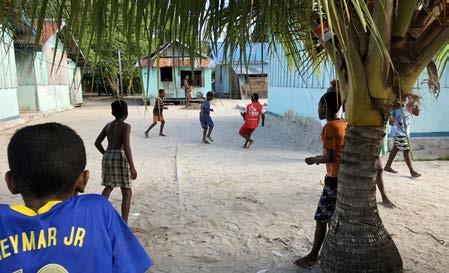
Melissa’s Garden was exquisitely beautiful and made me feel as one with the fish and the whole environment in a way that’s just not possible even after a half-century of staring into aquariums— not even with the largest public aquarium. The astounding underwater amphitheater at Atlanta’s
Georgia Aquarium or the huge central tank at Boston’s New England Aquarium or the captive kelp forest at Monterrey Bay still feel like exhibits, displays. They’re contained. And there’s this thing that bugs me about those big public aquariums, or most of them.
Those huge central display tanks contain beautiful fish and other creatures, but they contain beautiful fish that would never meet in nature. They’re not a true picture of the life of the sea. But this—this was the real thing. Sawandarek was just as real and just as astounding, but in altogether different ways.
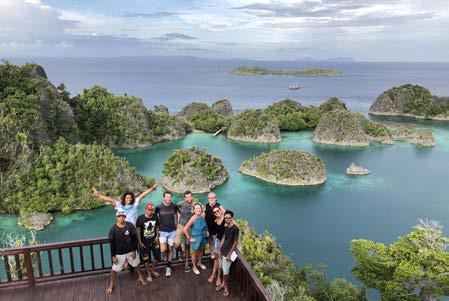
We were in a little bay with a jetty where we’d already done a gorgeous dive earlier that day—as I wrote in my dive log, another “in the aquarium” experience. In our usual pre-dive briefing we were told that this time we’d be visiting a cleaning station—a place where large ocean-going fish come into these shallow coastal waters to be picked clean of parasites by swarms of small fish. Classic symbiosis, writ large. We were also told that at the start of the dive, when we’d be at our maximum depth, about 85', not only to pay attention to all the life on the surface of the reef but to also look out into ‘the blue’ where the larger fish would be gathering for their turn to be cleaned. This spot attracted not only large oceanic fish, but huge sea turtles that seemed as big as a VW Beetle. But the exhilaration of diving can lead to a bit of exaggeration. On my second-ever night dive (!!!), at a place called Batu Rufus, I shined my light under a coral ledge to see this monstrous yellow and gold spider-y crab coming toward me in defense of its lair. When I told my companions about the encounter later that evening, others had seen the same creature. “Get real, Jason, it wasn’t all that big.” OK, so take my VW Beetle comparison with a grain of sea salt, but let’s just say the turtles we saw at Sawandarek were enormous compared to the ones we regularly saw on our other dives.
We also saw an amazing variety of sharks beyond the black-tipped and reef sharks that normally cruise the waters just beyond the reefs, including wobbegongs, elaborately camouflaged bottomdwelling sharks laying in wait under and between
the coral heads. There was a bunch of hand-waving, and we swam over to see what was up. It was a large cuttlefish, just above the sandy bottom, about ten feet below us. It was not happy to see us and put on a bravura display of its own camouflage arts, shifting every few seconds from pattern to pattern and color to color in its attempts to hide itself or frighten us or just put us on notice that it was its own master before it decided that none of this was working and jetted off into the blue in a cloud of gray ink. And yes, I looked out into the blue. There I saw, arrayed in layers, first huge schools of trivally and snapper, then barracuda, then sharks, then beyond that even larger fish too deep and distant to identify. They had all laid down their arms—this was a DMZ, a cease-fire to “nature red in tooth and claw.” All were waiting their turn at the cleaning station, a wait that could take days. It was, in a word, majestic.
Then we came to the cleaning station itself. I was at the base of an enormous column of coral that rose nearly four stories toward the surface. Along the face of the column, vast swarms—thousands upon thousands—of small black fish, each with a Cardinal Tetra blue stripe, rose and fell, rose and fell, like the feeding schools at Melissa’s Garden. And as my eyes travelled up the column and toward the surface, I could see hundreds of enormous barracuda, concentrically arrayed with their noses all pointing toward the cleaning station, engulfed in clouds of the cleaner fish. Beyond them, more rings of huge fish waiting their turn. It was like the opening scene of The Lion King, when all the creatures of the savannah come to pay homage to the newborn Simba. But this was no cartoon. I was paralyzed with wonder. I had a regulator in my mouth, so I can’t really say that my jaw dropped or that I was struck dumb, and I was immersed in tropical waters, so I can’t really say that a chill ran down my spine. I watched this spectacle in a state of mind-boggled, dreamlike awe, suspended surreally, weightlessly in the water. It was “The palm at the end of the mind, / Beyond the last thought…” It was impossibly alien and yet it was there, very much there, and I was there too, perfectly still lest any movement from me cause the animals to scatter and this otherworldly pageant to vanish. But that wasn’t going to happen, not any time soon. I was witnessing a scene that plays out day and night today as it has in one way or another and in one place or another for millions of years. It was a peaceable kingdom. It was order amid the rush and chaos of life on Earth. It was the soft touch of infinity, of The Universe.
I was low on air and had to make my way to the surface. When I came up, the mate in the waiting launch said, “So was it as good as we’d told you?” I gathered my rushing thoughts and surging emotions for a moment. “It was a religious experience,” I whispered. “I think I just saw God.”

Ateam of biologists from the Okinawa Institute of Science and Technology Graduate University (OIST) in Japan, and Western Philippines University (WPU) in the Philippines have found two new species of goby fish in Palawan, a Philippine archipelago. The goby fish, both belonging to the genus rhinogobius, were described recently in the journal Zootaxa.
One of the species was given the Latin scientific name Rhinogobius estrellae, and was named for the waterfall Estrella Falls, in Barangay Estrella Village, where the goby was discovered.
The second species was named Rhinogobius tandikan, with the name inspired by the Palawan peacock-pheasant, known locally as ‘Tandikan’.
“The Tandikan goby has these blue markings on its body, which reminded me of the spots in the Tandikan’s plumage,” said Dr. Ken Maeda, first author of the study and staff scientist in the Marine Eco-EvoDevo Unit at OIST.
Rhinogobius estrellae and Rhinogobius tandikan are the third and fourth new goby species discovered in Palawan as part of a collaboration project between OIST and WPU, following Stiphodon palawanensis, described in 2015, and Lentipes palawanirufus, described in a study last year.

The identification of Rhinogobius species in the tropical islands of Palawan shows that the range of this goby genus extends much further south than previously known. “We were very surprised the first time we saw Rhinogobius estrallae, and then really excited when we found the second species,” said Dr. Maeda. “The Rhinogobius habitat is typically located in temperate and sub-tropical regions further north than Palawan, in places like Vietnam, China, Japan, and even the Russian Far East. Finding gobies from this genus in Palawan was very unexpected!”
The research team also analyzed DNA taken from the mitochondria for the two species, which placed both species in an ancient lineage within the Rhinogobius group. Previously, only one other goby, Rhinogobius similis, belonged to this evolutionary line. The three species also share similar physical characteristics unique to this lineage, including the arrangement of sensors on their head.

Unlike the Rhinogobius similis, which has a wide distrubution range, from Japan to Vietnam, the two new species appear to be endemic, meaning they are only found in one location, even within the island of Palawan itself.
In order to protect these two new species, the scientists urge that special attention must be given to preserve their habitats.
“Their endemic nature really raises the risk and threat level for both species,” explained Dr. Maeda. “Any disruption to their habitat, such as dams, roads, leisure facilities or development of the land for agriculture could quickly lead to their extinction.

Journal Reference:
1. Ken Maeda, Chuya Shinzato, Ryo Koyanagi, Taiga Kunishima, Hirozumi Kobayashi, Noriyuki Satoh, Herminie P. Palla. Two new species of Rhinogobius (Gobiiformes: Oxudercidae) from Palawan, Philippines, with their phylogenetic placement Zootaxa, 2021; 5068 (1): 81DOI: 10.11646/zootaxa.5068.1.3
Photos from Fishbase
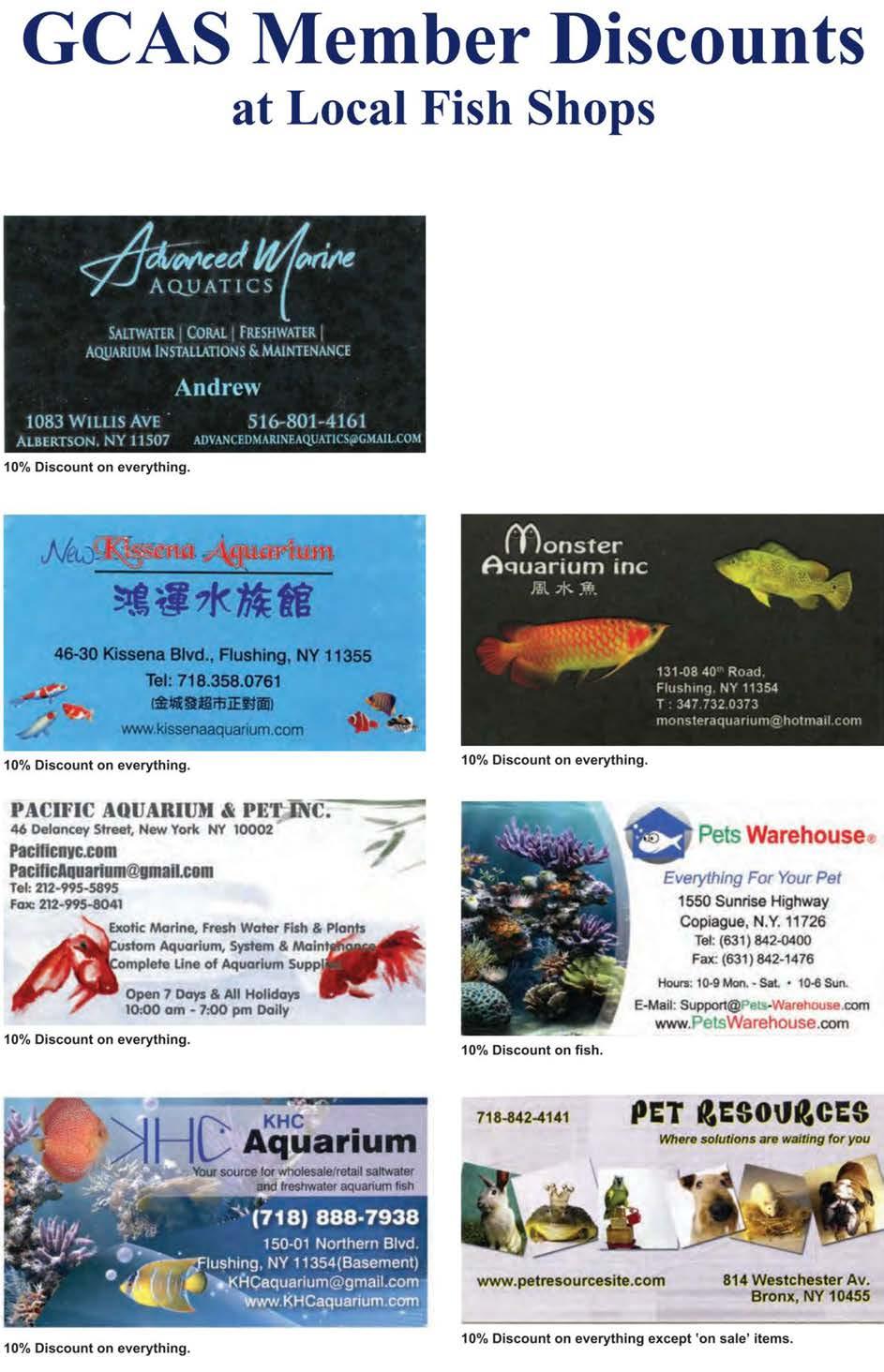







Two tanks for sale. 75 gal & 40-long. Stand, filters & heaters included.
Contact Dan R if interested.
Talk to me at our next meeting or email danrad545@earthlink.net Pickup only.
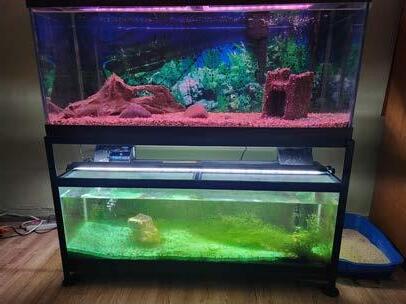
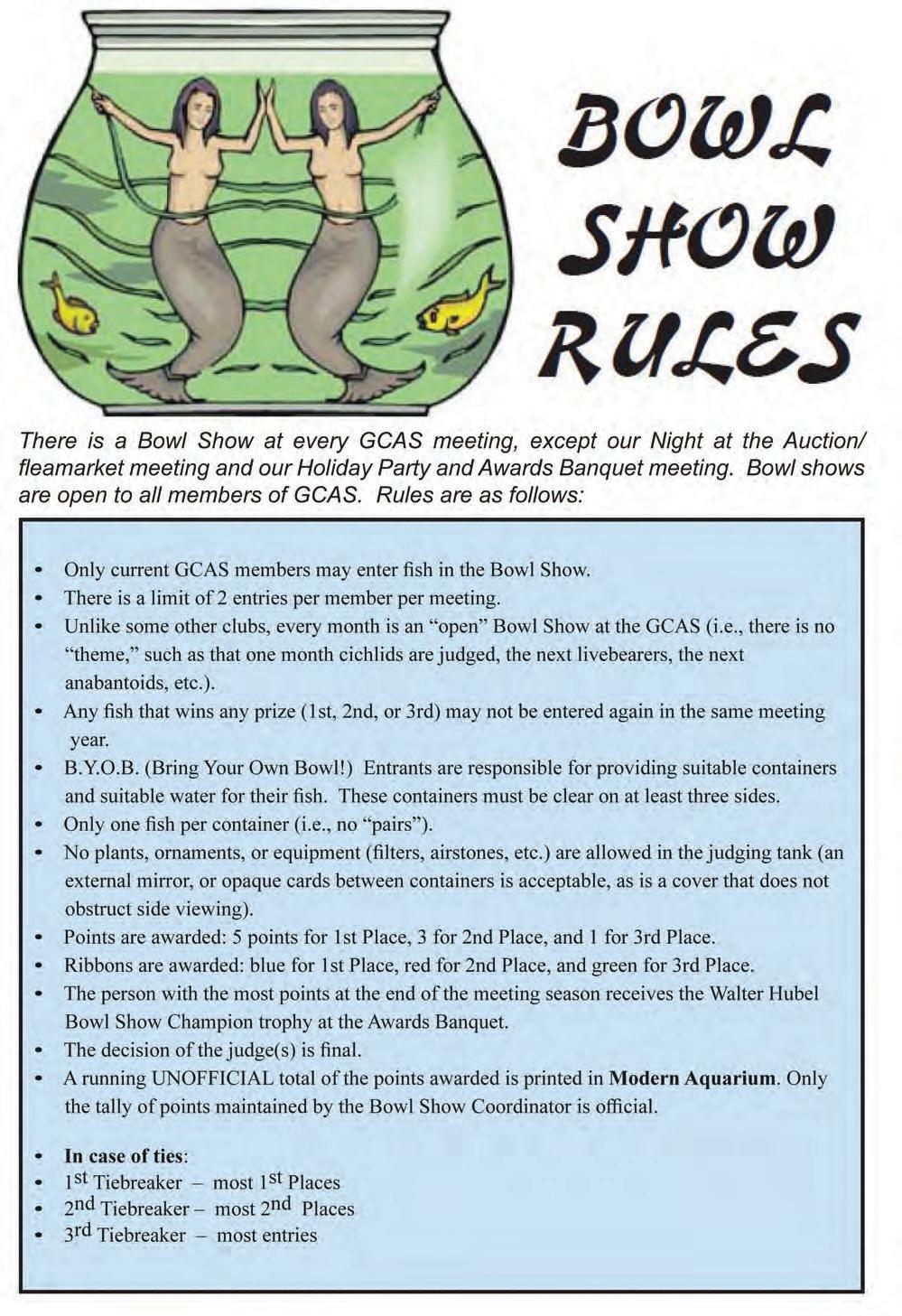

Afemale stingray in rural North Carolina is making news after her owners found her pregnant with stingray pups despite not sharing her tank with a male stingray for over eight years. The rustcolored round stingray (Urobatis helleri) is named Charlotte, though perhaps Mary is more appropriate. Round stringrays are typically found in the coastal waters of the Pacific Coast of North America, where they occasionally deliver a non-fatal sting to swimmers who make the mistake of stepping on one. Charlotte,
however, has spent most of her life in a large saltwater tank in the Aquarium and Shark Lab by Team Ecco in Hendersonville, North Carolina.
Charlotte is about the size of a dinner plate, but recently, staff at the Aquarium and Shark Lab noticed she was swelling in size and eating more. Concerned that Charlotte was being overfed or possibly developing tumors, the staff were shocked to learn from a local veterinarian that she had eggs—four to be exact.


While Charlotte is housed with two male sharks, scientists and veterinarians were quick to reassure the public that there was no chance one of the sharks was the father. Instead, scientists suspect parthenogenesis. Parthenogenesis, which comes from the Greek words for “virgin creation,” is a form of asexual reproduction in which a female will develop an embryo directly from an unfertilized egg. While parthenogenesis has long been observed in certain types of invertebrates such as bees, wasps, and ants, scientists have now identified more than 80 vertebrate species that have shown the ability to reproduce via parthenogenesis. In June 2023, for instance, a Costa Rican zoo reported that a female American crocodile was pregnant with a genetically identical fetus, though the baby crocodile ultimately did not hatch. Charlotte is the first known example of a stingray that has been observed to reproduce this way, however. While many animals that are conceived via parthenogenesis will be clones of their mother, scientists have declared that isn’t always the case.
When Charlotte gives birth, the Team Ecco staff have indicated they will move her to a much larger tank. No word on whether the angel Gabriel has instructed Charlotte what to name the offspring.

With the passing of Sal Silvestri we have lost one of the corner stones of the Norwalk Aquarium Society, as well as a friend and mentor. Many of us referred to him as the Godfather. I don't know who came up with that, but it fit. Always a call away for help with a fish, or on a personal note over one of his special cappuccinos, which I’m gonna miss also…
When it came to breeding fish, he was our Babe Ruth― the guy you want to try to catch some day. In 2018 he achieved the 3,000 point level; quite an accomplishment, when you think fish range in points from 5 through 20. That’s a lot of work! Sal kept going, 3,695 points total. While a few of us are close to 2,000 points, Sal is truly our BAP champion.

Sal has been an active hobbyist for over 40 years. It all started with one goldfish he won at a carnival. This one fish bowl eventually grew to a 55 gallon tank which housed two 14" Oscars.
Sals tanks grew along with his breeding skills, and 40 years later he was still running tanks, that range from 10 to 125 gallons. Four of the tanks are devoted to communities of Lake Tanganyika cichlids, and four house several varieties of apistogramma species, which is another of Sal's favorites. The remaining tanks contain a variety of cichlids from West African to tetras, bettas and a new-found love―unusual plecos and corydoras.
Sal joined and became very active in the Norwalk Aquarium Society in 1975, and held every position in the club. Sal’s notoriety has spread far and wide, as he has generously shared his knowledge and wisdom during many speaking engagements throughout the Northeast USA and Europe. He has also written many articles and has been honored with reprints in the ACA’s Buntbarsche Bulletin as well as society magazines across the country and abroad.
Sal was always looking for the newest, nicest, and hardest to breed fish. It was the thrill
of the hunt, the challenge, and once accepted, the fish became his focal point. With the help from what he called his “magic bucket,” where he found a lot of his fry while doing water changes. I would get many a phone call with the good news that we had a new fish in the family to share. That’s what Sal was about, our fish family. I watched him hand out many a bag of Apistos and telling the lucky potential breeder, “THEY’RE EASY!!!”
“That’s what makes this fun!!!” he said. I shake my head as I write this, trying to think how to offset missing him. I guess I’ll start by trying to spawn those Cardinal Tetras he gave me before leaving for Florida, and I will hear Sal saying to me, “You know they should be easy!!!”
Sal’s knowledge and passion for our hobby has touched so many people with one tank or an entire fish room, and all say the same thing― he made fish keeping fun.
We can only remember our friend, and with him in mind promote and support each other, the club and hobby. I think I’m going to buy a kid a goldfish or two!
Postscript:. (from Joe |Ferdenzi)
While Sal was certainly one of the cornerstones of the Norwalk Aquarium Society, he was also important to Greater City and every other aquarium society in the Northeast and elsewhere. I first met Sal around 1986, and he was already a famous aquarist. Over the years, Greater City could always count on Sal for a terrific monthly program or for donations to our auctions. On a personal level, Sal was always gracious and friendly. When we saw each other, we would get a kick out of talking to each other in our native language, Italian.
Addio, caro amico!


